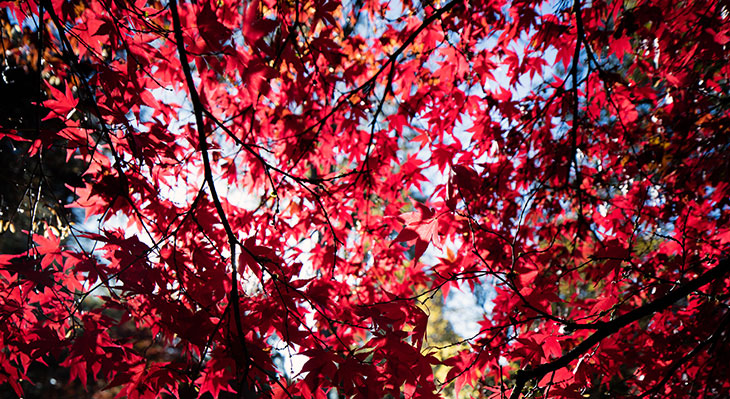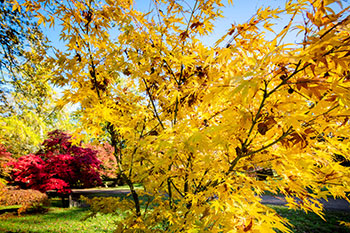Why DO leaves change colour in autumn?
We all know that Westonbirt is famous for its magnificent autumn colour spectacle – but have you ever wondered exactly why the leaves change colour at this time of year? And why do they go such a different variety of colours?
Leaf colour depends on the balance of different chemicals within each leaf. In most leaves the dominant chemical throughout summer is chlorophyll. This pigment is responsible for changing carbon dioxide and water into the sugar that gives the plant its energy. It also gives leaves their green colour.
When autumn arrives, the weather cools and the days get shorter, so the leaves receive less sun. Chlorophyll production shuts down allowing the other leaf pigments to show their colours. Like an artist’s mixing palette, the balance of different pigments dictates what colour different trees turn.

The chlorophyll pigment breaks down, and as it does so other pigments are revealed…

Carotenes – oranges. Have a look at sweet chestnuts to see carotene in action!

Xanthophylls – yellow. You can see Xanthophyll pigments in a variety of trees including, birch, beech, ash and field maples.
Another group of pigments in the leaves are anthocyanins. These pigments create the purple and red colours that make autumn so beautiful! Unlike the other pigments, the leaves of most tree species don’t contain anthocyanins throughout the whole year. In fact they are actively made by the leaves in autumn (and in spring in some species). Scientists are still arguing over why trees do this – some have suggested the chemical helps to deter insect pests, while others believe the chemical acts as a sort of sun screen that helps to prevent damage to the leaves. Japanese maples produce a lot of anthocyanins, the best place to see them at Westonbirt is in Maple Loop in Silk Wood.
Find out more about the science behind the autumn colour change on Westonbirt Arboretum's autumn trail – pick up your free map from the Welcome Building!
Keen to see the autumn colour spectacle - why not become a member online today? Join here...
